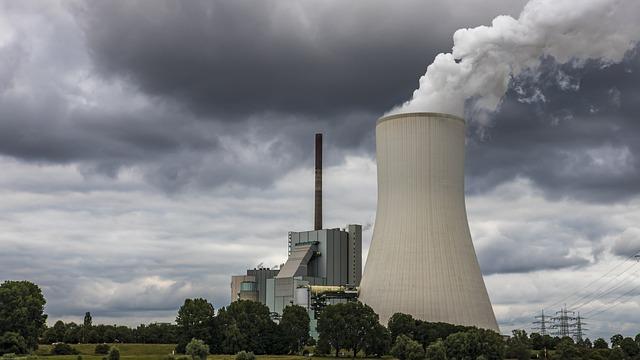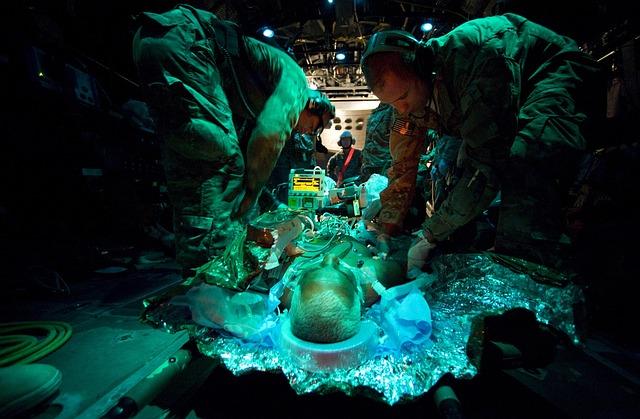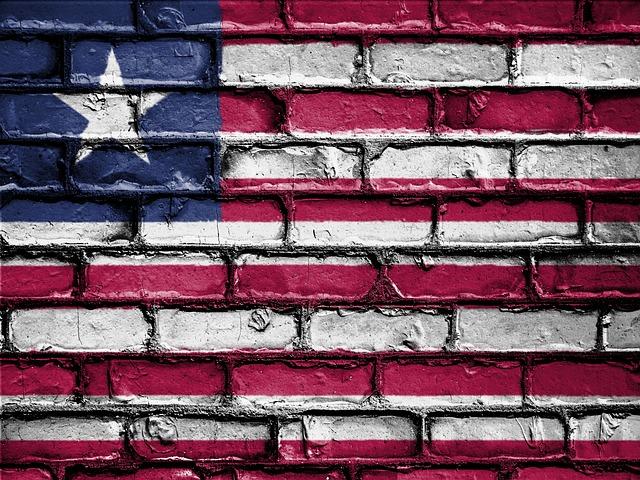In the remote regions of southwestern Liberia, communities face an array of challenges that threaten their health and well-being. Access to quality medical care is often compromised due to a lack of reliable power sources and essential equipment, such as medical oxygen.However,innovative initiatives like those implemented by Direct Relief are making meaningful strides in transforming this landscape. By providing resilient power solutions and critical supplies of medical oxygen, Direct Relief is not only enhancing the capacity of local health facilities but also ensuring that lifesaving care is accessible to those who need it most. This article delves into the impact of these efforts, highlighting the vital role they play in strengthening healthcare systems in some of Liberia’s most underserved areas.
The Vital Role of Resilient Power in Healthcare Delivery in Southwestern Liberia
The integration of resilient power sources into healthcare facilities is crucial for maintaining effective medical services in Southwestern Liberia. In a region often plagued by power outages, the reliability of electricity determines not only the operation of medical equipment but also the provision of critical healthcare services.Without a dependable power source,facilities struggle to function efficiently,leading to compromised patient care. The ability to ensure continuous power enables healthcare providers to:
- operate life-saving equipment such as ventilators and monitors.
- Administer medical treatments that require constant temperature control.
- Process laboratory results necessary for timely diagnosis.
Along with power reliability, the availability of medical oxygen stands as a pillar of intensive care, especially in emergencies. Many patients require supplemental oxygen during their treatment, and an inconsistent supply can result in dire health consequences. Integrating stable oxygen supply systems with robust power sources ensures that facilities can meet these needs without interruption. This partnership not only enhances patient outcomes but also strengthens the overall healthcare framework in the region. Key benefits include:
- Improved patient outcomes through uninterrupted respiratory support.
- Enhanced readiness for emergency situations where oxygen is critical.
- Reduced stress on healthcare personnel by streamlining resource management.

addressing Respiratory Emergencies with Medical Oxygen Support
The availability of medical oxygen plays a critical role in the management of respiratory emergencies, particularly in regions where healthcare resources may be limited. In Southwestern Liberia, healthcare facilities have seen a dramatic improvement in patient outcomes due to the steady supply of medical oxygen.this essential resource is vital for treating various respiratory conditions, including pneumonia, asthma exacerbations, and chronic obstructive pulmonary disease (COPD). With a reliable source of oxygen, healthcare providers can significantly reduce mortality rates associated with respiratory distress.
In addition to improving patient care, the introduction of medical oxygen supply has led to the implementation of training programs for healthcare workers, enhancing their ability to respond effectively to emergencies. These training initiatives focus on:
- Oxygen therapy techniques: Ensuring correct management and monitoring of patients.
- Equipment maintenance: Teaching skills for the upkeep and operational knowledge of oxygen systems.
- Emergency protocols: Developing rapid response strategies during critical situations.
The combination of robust power solutions and a consistent oxygen supply in Liberia is a model for addressing respiratory emergencies, demonstrating how integrated efforts can lead to lifesaving care in challenging environments.

Challenges in Accessing life-Saving Resources and Infrastructure
Accessing essential life-saving resources and infrastructure remains a formidable challenge in southwestern Liberia. The region grapples with frequent power outages, inadequate healthcare facilities, and a shortage of crucial medical supplies. These barriers not only hinder the delivery of quality care but also jeopardize the lives of vulnerable populations who depend on reliable medical support. Key issues include:
- Poor Road Infrastructure: Many health facilities are located deep in rural areas, making them difficult to reach, especially during the rainy season.
- Limited Local Production: A reliance on imports for vital medical supplies leads to delays and shortages, particularly during crises.
- Lack of Trained Personnel: There is a deficit of qualified healthcare workers equipped to provide essential services, exacerbating the existing healthcare crisis.
The constraints are further magnified by the complex logistics of supply chains, which are crucial for sustaining operations in healthcare facilities. Efficient transport networks and adequate storage facilities are required for resources like medical oxygen, which is vital for treating respiratory patients.Efforts to enhance local capacities include:
| Initiative | description |
|---|---|
| Portable Oxygen Systems | Mobile units that can be deployed to communities in need. |
| Renewable Power Solutions | Solar-powered systems that ensure uninterrupted energy supply to health facilities. |
| training Programs | Workshops to enhance skills of local healthcare workers in emergency care. |

Community Impact: How Improved Care Transforms Lives
In Southwestern Liberia, the introduction of robust medical oxygen systems combined with lasting energy solutions is reshaping the landscape of healthcare delivery. Medical oxygen, a crucial component in treating respiratory illnesses, has become increasingly accessible, allowing healthcare providers to significantly enhance patient outcomes. Facilities equipped with this essential resource are witnessing not just improved survival rates, but also a change in the general perception of health services within communities. Resilient power systems ensure that these facilities remain operational, even during grid failures, allowing for continuous care and bolstering community trust.
This innovative approach has led to a ripple effect that extends far beyond the walls of hospitals and clinics. Local communities are experiencing greater health awareness, increased patient engagement, and collaborative health initiatives that encourage preventive care. The improved availability of medical oxygen contributes directly to the treatment of conditions such as pneumonia and COVID-19, crucially reducing the burden on families and fostering a sense of security. To encapsulate the benefits, consider the following points:
- Enhanced Patient Care: Consistent availability of essential oxygen therapy.
- Community Empowerment: Informed locals are taking active roles in health initiatives.
- Economic Growth: Healthier populations contribute more effectively to local economies.

Innovative Solutions for sustainable healthcare in Remote Regions
In Southwestern liberia, innovative approaches to healthcare are addressing critical challenges posed by both geography and resource scarcity. The introduction of resilient power systems ensures that health facilities can operate uninterrupted, maintaining essential services such as surgery and maternal care. Reliable electricity is crucial for running medical equipment and providing lighting, which are vital for conducting procedures safely and effectively.
Moreover, the provision of medical oxygen has emerged as a transformative solution for patients suffering from respiratory diseases and complications.Oxygen concentrators and generators are being strategically deployed in clinics to ensure that patients receive the lifesaving treatment they need without the delays that come with logistics in remote areas.key elements that enhance this sustainable healthcare initiative include:
- Solar Energy Solutions: Harnessing renewable energy to provide consistent power.
- Community Training: Educating local health workers on oxygen management and maintenance.
- Partnerships: Collaborating with NGOs and government entities for resource mobilization.
| Innovation | Impact |
|---|---|
| Resilient Power systems | ensures 24/7 operation of medical facilities |
| Medical Oxygen Supply | Improves patient survival rates significantly |
| Telemedicine Initiatives | Expands access to specialist care remotely |

Collaborative Efforts: Strengthening Partnerships for Global Health Initiatives
In the heart of Southwestern Liberia, collaborative efforts among various stakeholders have created a robust framework for improving health infrastructure. By joining forces, healthcare providers, NGOs, and international organizations are addressing critical shortages of medical supplies and enhancing the capacity for patient care. This synergy has led to significant advancements in the availability of essential services, as community health workers and local leaders engage in outreach efforts that amplify resources.The introduction of innovative solutions like mobile health units and the installation of solar-powered systems has not only increased access to care but has also empowered communities to take charge of their health outcomes.
The focus on medical oxygen has emerged as a crucial component of this partnership. By prioritizing the distribution of oxygen concentrators and cylinders, healthcare facilities are better equipped to manage respiratory illnesses, which are prevalent in the region. This is especially vital given the recent challenges posed by infectious diseases. Key initiatives include:
- Training local staff to operate and maintain oxygen equipment.
- Establishing community awareness programs about respiratory health.
- Utilizing data-driven approaches to identify and respond to health emergencies.
the impact of these collaborative efforts is reflected in improved health statistics, making it a model worth emulating as othre regions strive to tackle similar challenges.

Concluding Remarks
the collaborative efforts in Southwestern Liberia to provide reliable power and medical oxygen have significantly transformed the landscape of healthcare delivery in the region. Through the steadfast commitment of organizations like Direct Relief, communities are not only receiving critical resources but are also empowered to enhance the quality of care for vulnerable populations. The integration of resilient energy solutions and essential medical supplies stands as a testament to the importance of innovation and partnership in tackling health crises. As Liberia continues to overcome challenges, these initiatives serve as a beacon of hope, illustrating the profound impact that targeted interventions can have on saving lives and strengthening health systems.The journey ahead may still be fraught with obstacles, but the resilience demonstrated by local health workers and the support from the global community promise a brighter, healthier future for all.







